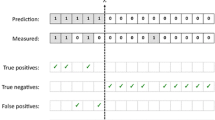Abstract
The dynamic nature and comparatively young age of computational chemistry is such that novel algorithms continue to be developed at a rapid pace. Such efforts are often wrought at the expense of extensive experimental validations of said techniques, preventing a deeper understanding of their potential utility and limitations. Here we address this issue for ligand-based virtual screening descriptors through design of validation experiments that better reflect the aims of real world application. Applying the newly defined chemotype enrichment approach, a variety of two- and three-dimensional (2D/3D) similarity descriptors have been compared extensively across data sets from four diverse target types. The inhibitors within said data sets contain molecules exhibiting a wide array of substructure functionality, size and flexibility, permitting descriptor comparison in myriad settings. Relative descriptor performance under these conditions is examined, including results obtained using more typical virtual screening validation experiments. Guidelines for optimal application of said descriptors are also discussed in the context of the results obtained, as is the potential utility of fingerprint filtering.
Similar content being viewed by others
References
S. Wold (1991) Quant. Struct.-Act. Relat. 10 191
Eriksson, L., Johansson, E. and Wold, S., In Chen, F. and Schuurmann G. (Eds.), Quantitative Structure-Activity Relationships in Environmental Sciences-VII, Proceedings of QSAR 96, Elsinore, Denmark, June 24–28, 1996. SETAC, 1997, pp. 381–397.
Giuliani, A. and Benigni, R., In van de Waterbeemd, H., Testa, B. and Folkers, G. (Eds.), Computer-Assisted Lead Finding and Optimization: Current Tools for Medicinal Chemistry, Proceedings of the 11th European QSAR Symposium, VHCA & Wiley-VCH, Weinheim, Germany, 1997, pp. 51–63.
A.C. Gaudio E. Zandonade (2001) Quim. Nova 24 658
H. Kubinyi (2002) Quant. Struct.-Act. Relat. 21 348
A. Golbraikh A. Tropsha (2002) J. Comput.-Aided Mol. Des. 16 357
K. Baumann (2003) Trends Anal. Chem. 22 395
R. Nilakantan N. Bauman R. Venkataraghavan (1993) J. Chem. Inf. Comput. Sci. 33 79
A.C. Good T.J.A. Ewing D.A. Gschwend I. Kuntz (1995) J. Comput.-Aided Mol. Des. 9 1
S.K. Kearsley S. Sallamack E.M. Fluder J.D. Andose R.T. Mosley R.P. Sheridan (1996) J. Chem. Inf. Comput. Sci. 36 118
J.W. Raymond P. Willett (2002) J. Comput.-Aided Mol. Des. 16 59
S. Putta C. Lemmen P. Beroza J. Greene (2002) J. Chem. Inf. Comput. Sci. 42 1230
A.C. Good D.L. Cheney D.F. Sitkoff J.S. Tokarski T.R. Stouch D.A. Bassolino S.R. Krystek Y. Li J.S. Mason (2003) J. Mol. Graph. Mod. 22 31
P.A. Witt-Enderby P.-K. Li (2000) Vitam. Horm. 58 321
P.W.R. Harris H.M. Hugel F. Nurlawis (2002) Mol. Simul. 28 889
Z. Chilmonczyk D. Siluk R. Kaliszan (2001) Exp. Opin. Ther. Pat. 11 1301
Robl, J.A., Sulsky, R.B. and Magnin, D.R., Heterocyclylbiphenyl AP2 inhibitors. WO 2000059506 PCT Int. Appl. (2000).
S. Wadler (2001) Drug Resist. Updates 4 347
J.M. Walenga W.P. Jeske D. Hoppensteadt J. Fareed (2003) Curr. Opin. Invest. Drugs 4 272
Daylight fingerprints are produced using the Daylight Toolkit, part of the software suite from Daylight Chemical Information Systems: www.daylight.com.
M. Rarey J.S. Dixon (1998) J. Comput.-Aided Mol. Des. 12 471
Ftrees is part of the software suite from BioSolveIT: www.biosolveit.de.
R.E. Cahart D.H. Smith R. Ventkataraghavan (1985) J. Chem. Inf. Comput. Sci. 25 64
D. Ellis J. Furner-Hines P. Willett (1993) Perspect. Inf. Manag. 3 128
J.S. Mason I. Morize P.R. Menard D.L. Cheney C. Hulme R.F. Labaudiniere (1999) J. Med. Chem. 42 3251
A.C. Good S.-J. Cho J.S. Mason (2005) J. Comput.-Aided. Mol. Des. 18 523
Concord 3D structure builder, distributed by Tripos and Optive Research Inc.: www.tripos.com, www.optive.com.
S.D. Pickett I.M. McLay D.E. Clark (2000) J. Chem. Inf. Comput. Sci. 40 263
R.P. Sheridan S.K. Kearsley (2002) Drug Discov. Today 7 903
World Drug Index, distributed by Derwent Publications Ltd.: www.derwent.com.
Author information
Authors and Affiliations
Corresponding author
Rights and permissions
About this article
Cite this article
Good, A.C., Hermsmeier, M.A. & Hindle, S. Measuring CAMD technique performance: A virtual screening case study in the design of validation experiments. J Comput Aided Mol Des 18, 529–536 (2004). https://doi.org/10.1007/s10822-004-4067-1
Received:
Accepted:
Issue Date:
DOI: https://doi.org/10.1007/s10822-004-4067-1




